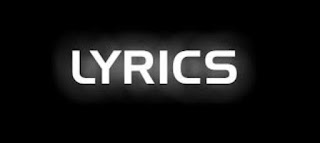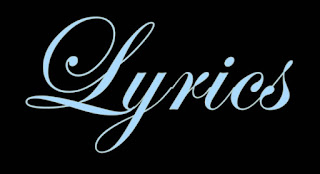Onye Nwe anyi ezitewo (Our God who sent)
Ndi Mmoziya ka ha nonyere anyi
(His angels to come be minister to us)
You are the Living God O!
Eze (King), no one like You
Chorus
Ekwueme! Ekwueme! (The One who says and does)
Ekwueme! Ekwueme! (The One who says and does)
You are the living God o!
Eze (King), no one like you (Repeat)
You’re my Healer, You are my Keeper
My Restorer, My Life-giver
You are the living God o!
Eze (King), no one like You
No one can do me like You do
No one can touch me like You do, God!
You are the living God o!
Eze (King), no one like You
You picked me from the miry clay; set my feet on the rock to stay
You are my Promoter; You are my Defender
You are the Living God o!
Eze (King), no one like you
Okechi e nnukwu chi (Oh Great God, massive God)
Okechi e nnukwu chi (Oh Great God, massive God)
Nani gi bu ome okachie (Only You have the final say)
Nani ihe ikwuru bu ihe ina eme (Only what You say that comes to pass)
Praises
Omo okachie nnukwu chi (Final word, massive God)
Amama amasi amasi (Wise God, Wise God, All Wise God)
Olori ihe loro che loro enti (He swallows what swallows an elephant)
Agu bata Ohia Mgbada awara Oso (The tiger that makes the antelope flee)
Ekwueme so gi bu Ekwueme
(The One that says and does, You are the One who says and does)
Ihe ikwuru bu ihe ina eme (What You say is what You do)
Ihe ikara bu ihe ina eme (You do what you say)
Obu onye n’ekwu ma chim kwuchasia? (Who can say it when my God has not said it?)
Obu Onye N’aturu chim uka chukwu? (Who tells God what to do?)
Praises
Inweghi mgbanwe chukwu ebighebi e (Forever and ever you do not change)
Inweghi onyiri amama amasi amasi (You have no comparison, All-Knowing God)
Ebube dike, Okechi, Ekwueme
(Glorious in Power, Great God, The one who says and does)
Ihe ikwu k’ina eme (What you say is what You do)
Oloro Ihe loro ihe loro (He who swallows what swallow)
Enyi kpuru odumu n’ (The elephant and the lion)
Oke nmanwu n’eta Onwe ya (Great masquerade that guides Himself)
Ogbara nkiti Okwu biri n’ onu ya
(In His Silence, he still has the final say)
Echeta obi esie ike (The one when you remember are confident)
Gaga n’ ogwu (He who walks on thrones
Amama amasi amasi (Wise God, Wise God, All Wise God)
Oje n’ nmuo, Oje na madu chukwu Oma
(The one who travels in the Spirit and in the physical – Good God)
Obata ulo adinma
(He comes to a home everyone rejoices)
Ebube dike, Ebube dike, Ebube dike, Ebube dike
(Glorious in Power, Glorious in Power x2)
Ekwueme! (The one who says and does)
Ekwueme, Ekwueme (The one who says and does)
Ekwueme, Ekwueme, Ekwueme (The one who says and does)
Chi jury éluigwe we ju Uwa nile
(God who fills the heavens and the earth)
Ekwueme ihe ikwuru ka ina eme
(What You say is what You do)
Ekwueme nani gi bu ekwueme
(He that says and does, only you say and do)
Praises
Ikuku aman’onya chi obioma
(The wind that cannot be trapped)
Ekwueme ememue Ogara ngada nga
(The One who says and does, the wealthiest)
Obata ulo adi uma, chukwu onye olu ebube
(The one welcome in homes, the God that does glorious things)
Ekwueme ihe ikwuru ka’ina eme
(The one that says and does, what You say is what You do)
Obu onye n’aturu gi uka chukwu oma?
(Who tells you what to do, my God?)
Obudi Onye n’ekwu ma ikwuchasi chukwu ebighebi
(Who can tell You when to stop speaking? Everlasting God)
Nani gi bu ekwu eme, ihe ikara bu ihe ina eme o!
(The only One that says and does, You are the One that says and does it)
Ekwueme ibu ekwueme (The one who says and does)
Oke nmiri nke n’ebu ogwe!
(The one who says and does, the flood that carries the bridge)
Ebighebi eligwe!, Oke nmanwu n’eti onwe ya
(You are Heaven Forever)
Obata ulo adimma
(The masquerade that dresses Himself)
Chukwu O x5 (Oh God x5)
Ekwueme imedawomu obi
(God! You have consoled my heart)
Chukwu oma ,Oletara onye emejoro chukwu oma
(Good God, the one that consoles the offended)
Ekwueme, chi n’echere mu so gi bu ekwueme o
(The one who says and does, the one who thinks of me)
Ekwuemem mu mmm Ekwueme (the One who says and does)
See What you’ve done for me
See how you set me free
You are the Living God O!
Eze (My King), no one like You (Repeat)










